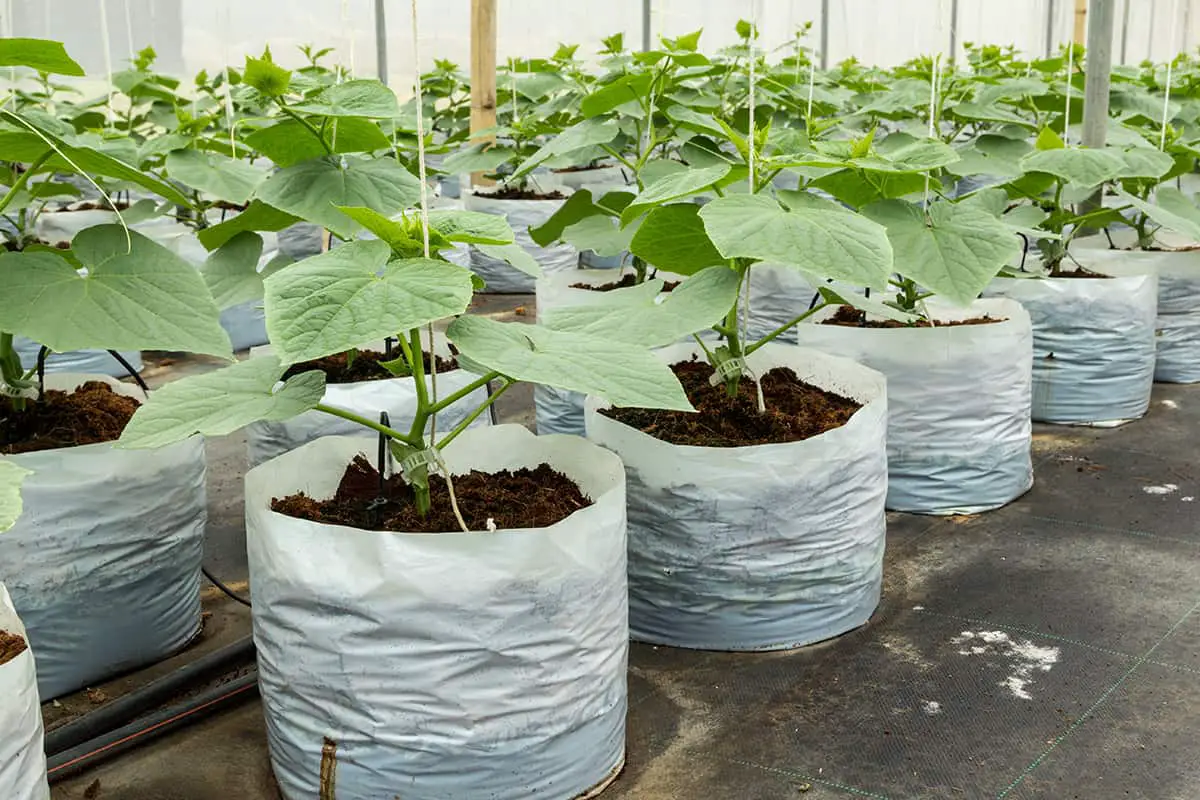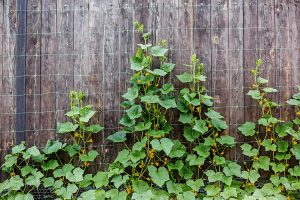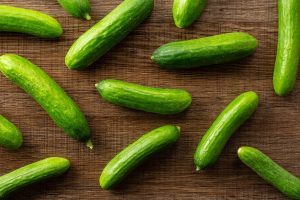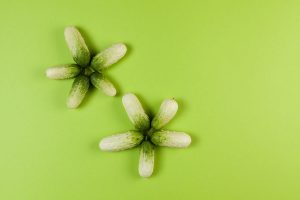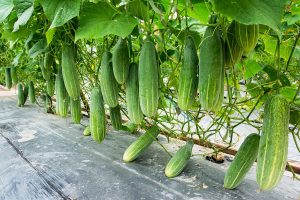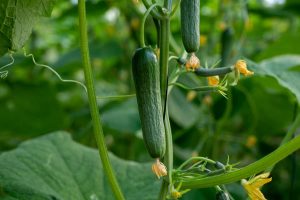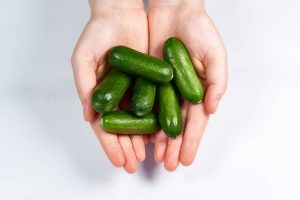Cucumbers are fun plants to grow because they have a vigorous habit and reward you with plenty of tasty fruits, which can be added to salads or smoothies.
Grow bags are an ideal way to grow cucumbers because the plants only live for a single season and therefore don’t need a permanent space in the garden. Here we look at the best size of grow bag to use for growing cucumber plants.
Table of Contents
What are Cucumber Plants?
The cucumber plant is botanically known as Cucumis sativus and belongs to the Cucurbitaceae family. This is a family which also includes squash, pumpkins, melons, and gourdes. The cucumber plant is an annual, which means it completes an entire life cycle in one season.
It is cultivated for its fruits, which are commonly used in salads, sandwiches, and smoothies, and you can also pickle cucumbers to preserve them. Cucumber plants are a type of vine that should ideally be trained to grow up a wooden trellis or net, as this will help to prevent rot, mold, or disease.
Best Grow Bag for Cucumbers
The best size of grow bag for growing cucumber bags is going to depend on how many plants you intend to grow in a bag and whether or not you will be transplanting them as they increase in size. If you want to sow the seeds indoors, or in a greenhouse, then a small grow bag will typically be the most suitable so that it doesn’t take up too much space.
You can sow a single seed in a 1-gallon grow bag, but the plant will need to be transplanted to a larger grow bag once the seedling is three weeks old.
Alternatively, if you are growing the cucumber plants outside from the start, then you don’t need to use smaller grow bags at first. Instead, choose a 5 gallon grow bag for each individual seed, and these will be suitable for growing the cucumber plant for its entire life cycle, so you will not need to do any transplanting.
1 gallon grow bags
Cucumber seeds are sensitive to cold, and they are not frost-hardy. Since they are annuals, they can be grown in any climate which has warm summers, but if your local spring temperatures are too cold, then you should start sowing the cucumber seeds indoors or in a greenhouse in spring, around three weeks before the expected final frost.
The ideal soil temperature for cucumber seeds to germinate is between 75 and 85 °F, so if the conditions in your garden are not suitable, then choose a 1-gallon bag to sow cucumber seeds indoors. This will allow you to get a head start on the growing season, and when the temperatures outside warm up, you can move your cucumber plants outdoors.
Each 1-gallon bag can contain one small cucumber plant. Set a single seed inside each 1-gallon cucumber pack at a depth of around half an inch to 1 inch below the surface of the soil. Keep the soil moist but not wet, and ensure the temperature remains at the appropriate level. If the soil gets too cold, the seeds will germinate slowly, or they may not germinate at all.
Germination will occur in around seven days if the conditions are ideal, and the seedlings can continue to grow indoors for a further 3 weeks. After this time, the cucumber plants will need to be transplanted into larger grow bags which will give them space to spread their roots and grow.
Each cucumber plant should be moved from a 1-gallon grow bag to a 5 gallon grow bag. The larger size of these grow bags makes them best suited to keeping outside, and by this point, the climate should be appropriate for moving the cucumber plants to life outdoors, as long as there is no further expected frost. The plants can then remain outdoors for the remainder of their life cycle.
5 gallon grow bags
If you live in USDA hardiness zones 9 to 11 then you can sow cucumber seeds outside and do not need to start out with smaller grow bags indoors. This is because the soil temperature will be warm enough in early spring for the seeds to be able to germinate effectively outside. This is great if you are a lazy gardener and don’t want to have to get involved in transplanting seedlings between different grow bags. Instead, select a 5-gallon size grow bag from the beginning, and position it in the garden in a spot that receives full sun.
Plant a single seed in each 5-gallon grow bag, and keep the soil moist. The seeds will germinate in around a week, and once the seedlings are a few weeks old, you can stake the vines so that they climb up a trellis and are kept off the ground. Each cucumber plant can remain in a 5 gallon grow bag for the duration of its lifecycle.
10 gallon + grow bags
A single adult cucumber plant will need to be grown in a 5 gallon grow bag, but you can grow a number of cucumber plants together if you have big enough grow bags to accommodate them. For example, a 10-gallon grow bag will be suitable for growing 2 cucumber plants, and a 15-gallon grow bag will be suitable for growing 3 cucumber plants.
Just remember that heavier grow bags will be difficult to move, so if you expect to move your cucumber plants during the season, then individual 5-gallon bags for each plant will make this easier.
Can I Reuse Cucumber Grow Bags?
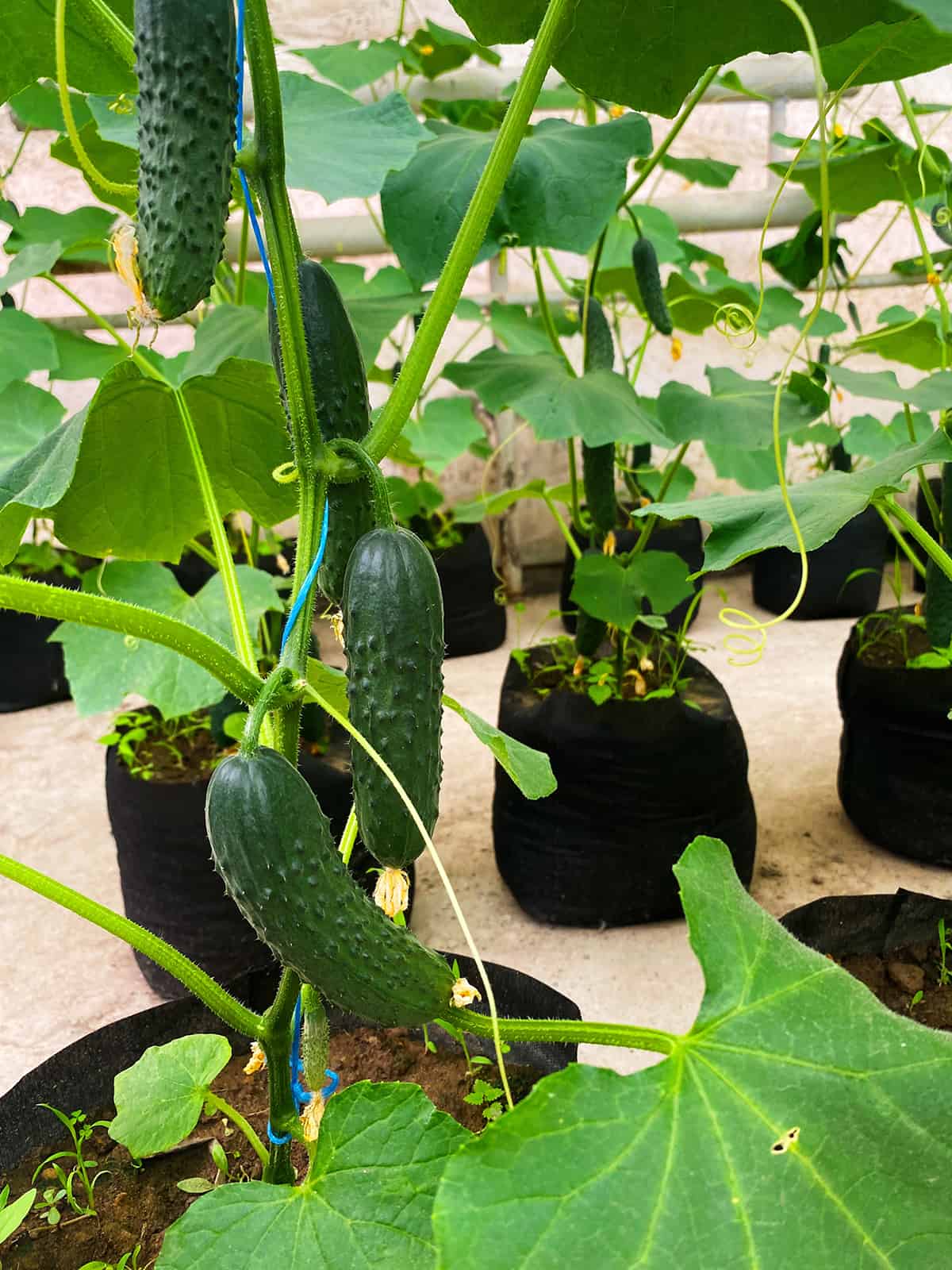
Grow bags are very popular for growing annual fruiting plants such as cucumber plants and tomato plants, but they can be wasteful if you just throw them away after a single season. Many people are not aware of this, but grow bags can actually be reused for several seasons.
A cucumber plant will die at the end of the summer after it has finished producing fruit, and it will not be able to regrow from its remaining roots because it is an annual plant. Once the cucumber plant has died, remove it from the grow bag, including the roots. You can now reuse the grow bag for a different plant, such as lettuce leaves, or store it properly in a dry area, such as a garage, saving it for next spring.
It can be used the following year for new cucumber plants or use it for completely different plants, such as strawberries, raspberries, or tomatoes. The nutrients in the soil will not be depleted for several years, so as long as you store the grow bag correctly, you can keep reusing it for different fruiting annuals and perennials.
Most grow bags are made from plastic, and this will need to be properly disposed of once you are completely done with the grow bag. However, you can buy fabric grow bags that are much more environmentally friendly. These can be used for several years with the same soil, and once the soil has been depleted of nutrients, you can empty it out and refill the fabric grow bag with fresh soil so that there is no wastage.
